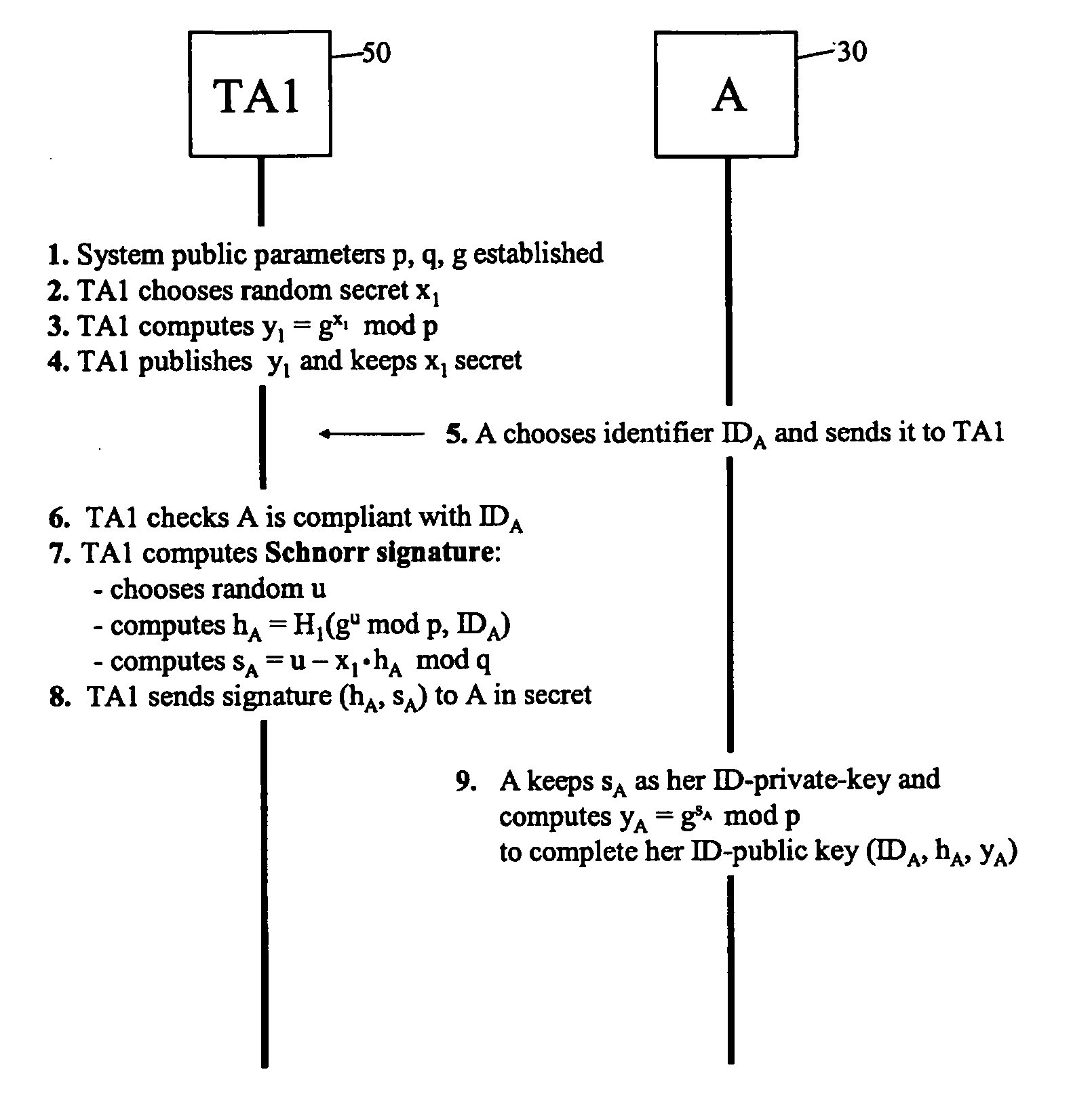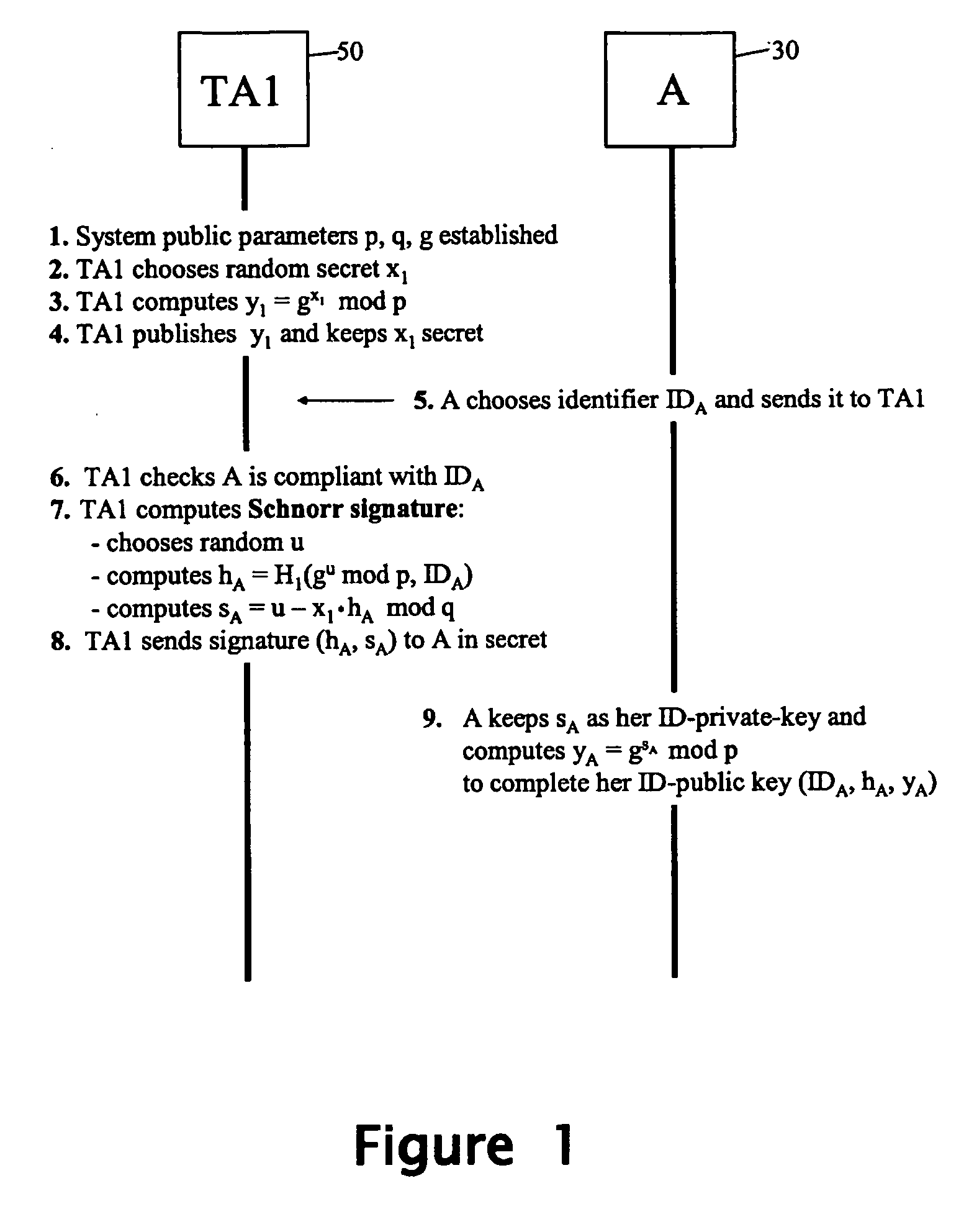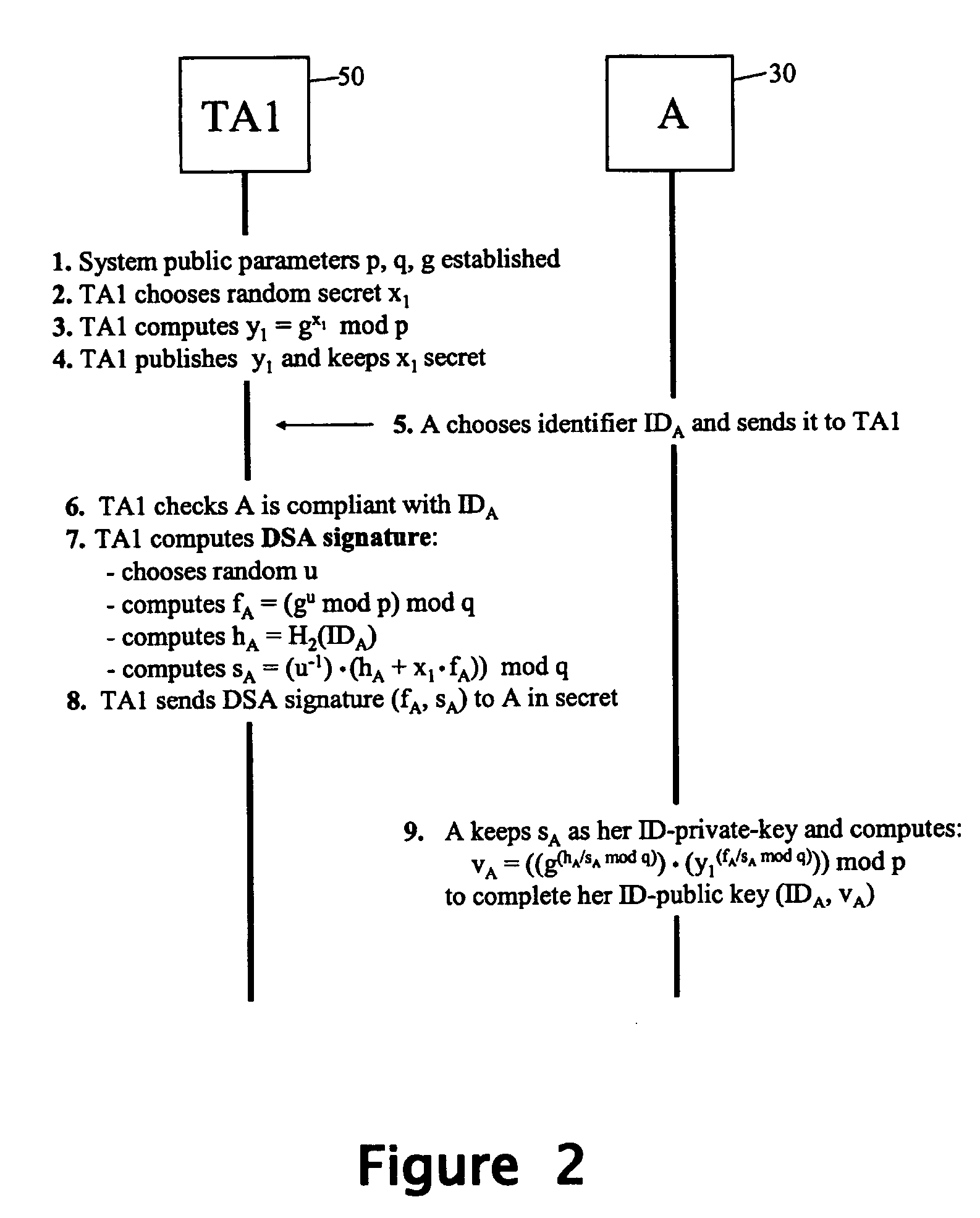Method and apparatus for generating an identifier-based public/private key pair
a public/private key and identifier technology, applied in electrical devices, digital transmission, securing communication, etc., can solve the problems of not providing corresponding ways for other ib methodologies, not being able to provide corresponding ways, and not being able to use and manage certificates
- Summary
- Abstract
- Description
- Claims
- Application Information
AI Technical Summary
Benefits of technology
Problems solved by technology
Method used
Image
Examples
example usages
Two-Party Authenticated Key Agreement—FIG. 10
[0199] A two-party authenticated key agreement example usage for the public / private key pairs generated by the methods of FIGS. 1 and 2 will now be described. In this example usage, the parties A and B both start with respective ID-based public / private key pairs (generated in cooperation with TA1 and TA2 respectively), and perform the same series of operations in order to generate the same inter-party symmetric key k. Due to the nature of the overall process, each party A / B knows that the only other entity that can generate the inter-party symmetric key k is the party identified by IDB / IDA whereby the party A / B is assured (to the extent it trusts TA2 / TA1) that if it can successfully communicate using the key k, then this must be with the party B / A (or a party authorised by the party B / A).
[0200] In the specific example described below with reference to FIG. 10, both trusted authorities TA1 and TA2 use the same system parameters p, q and g...
PUM
 Login to View More
Login to View More Abstract
Description
Claims
Application Information
 Login to View More
Login to View More - R&D
- Intellectual Property
- Life Sciences
- Materials
- Tech Scout
- Unparalleled Data Quality
- Higher Quality Content
- 60% Fewer Hallucinations
Browse by: Latest US Patents, China's latest patents, Technical Efficacy Thesaurus, Application Domain, Technology Topic, Popular Technical Reports.
© 2025 PatSnap. All rights reserved.Legal|Privacy policy|Modern Slavery Act Transparency Statement|Sitemap|About US| Contact US: help@patsnap.com



